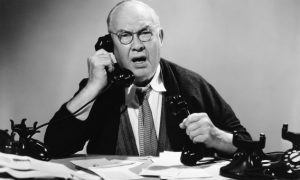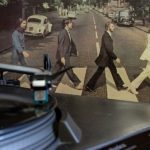 Creepy
Creepy  Creepy
Creepy  Technology
Technology 10 Scientific Breakthroughs of 2025 That’ll Change Everything
 Our World
Our World 10 Ways Icelandic Culture Makes Other Countries Look Boring
 Misconceptions
Misconceptions 10 Common Misconceptions About the Victorian Era
 Mysteries
Mysteries 10 Strange Unexplained Mysteries of 2025
 Miscellaneous
Miscellaneous 10 of History’s Most Bell-Ringing Finishing Moves
 History
History 10 Great Escapes That Ended Right Back in Captivity
 Weird Stuff
Weird Stuff 10 Fascinating Things You Might Not Know About Spiders
 Food
Food 10 Everyday Foods You Didn’t Know Were Invented by the U.S. Military
 History
History 10 Odd Things Colonial Americans Kept at Home
 Creepy
Creepy 10 More Representations of Death from Myth, Legend, and Folktale
 Technology
Technology 10 Scientific Breakthroughs of 2025 That’ll Change Everything
 Our World
Our World 10 Ways Icelandic Culture Makes Other Countries Look Boring
Who's Behind Listverse?

Jamie Frater
Head Editor
Jamie founded Listverse due to an insatiable desire to share fascinating, obscure, and bizarre facts. He has been a guest speaker on numerous national radio and television stations and is a five time published author.
More About Us Misconceptions
Misconceptions 10 Common Misconceptions About the Victorian Era
 Mysteries
Mysteries 10 Strange Unexplained Mysteries of 2025
 Miscellaneous
Miscellaneous 10 of History’s Most Bell-Ringing Finishing Moves
 History
History 10 Great Escapes That Ended Right Back in Captivity
 Weird Stuff
Weird Stuff 10 Fascinating Things You Might Not Know About Spiders
 Food
Food 10 Everyday Foods You Didn’t Know Were Invented by the U.S. Military
 History
History 10 Odd Things Colonial Americans Kept at Home
10 Surprising Facts About the History of Prank Phone Calls
For teenagers over the last several generations of life, prank phone calls have been a rite of passage. Think about it: You’re 14, you’re bored, and you’re home alone—or maybe with some friends. What’s there to do but call a few folks, drop a funny message on their answering machine, and/or play a harmless little joke? Sure, times have changed, and with the way the internet works now, prank phone calls are mostly a thing of the past. But right up until the last couple of decades, they were a huge part of the teenage experience.
In this list, we’ll take a look at the strange and fascinating history of prank phone calls. By the end of this rundown, you’ll learn a bunch of things you never thought to know about crank calling and its origins. And you’ll also clearly see that even folks who lived a century ago had a good sense of humor! So, scroll down, read on, and learn all about prank calling.
And then, if you’re feeling particularly mischievous (and you can somehow spoof your caller ID), perhaps you’ll go prank a friend. We’ll even give you a script for it: call up somebody and say, “Expect a call from Washington in ten minutes.” Then, in ten minutes, call back. Ask the caller if they’re expecting a call from Washington. When they say yes, calmly reply: “I’m sorry, he died over two hundred years ago.” Got ’em!
Related: 10 Wholesome Pranks with a Dark Side
10 The First Prank Call

Prank calls have been around forever. And over the years, pranksters have had to get sneakier and more creative. But no matter how many new tricks come along, the classics never go out of style. Take, for example, the old “Is your refrigerator running?” joke. If you’ve somehow missed this, here’s how it works: A prankster calls an unsuspecting person and asks, “Is your refrigerator running?” The confused victim says yes. And then, boom! The prankster hits them with, “Well, you better go catch it!” Cue the laughs (er, well, from the prankster, at least).
But prank calls were a thing LONG before refrigerators even existed. In fact, folks have been making goofy calls since the early days of the telephone. As it turns out, one of the first recorded prank calls happened in 1884. It made such a stir at the time that Electrical World Magazine even wrote about it!
Apparently, some mischief-maker in Providence, Rhode Island, decided to mess with a few local morticians. The prankster would call them up and ask for coffins, candlesticks, and other funeral items for supposed “dead” people. The poor undertakers would rush to prepare, only to find out later that they’d been duped. Talk about dark humor. So macabre! The magazine said the results were ridiculous but surprisingly effective, with the “reputed corpses” having become “lively” in their hunting for the prankster.[1]
9 The Pranks Get More Creative
Sure, pretty much everyone knows the classic “Is your refrigerator running?” line, but pranksters in the early 1900s were way more creative. Picture this: You’re at a bar in 1915, and you’re minding your business. Suddenly, someone leans over and whispers that a guy named “Tom Collins” has been trash-talking you. Naturally, you’re confused. Who is Tom Collins? And why is he talking smack?
The prankster keeps feeding you more details. “He said what?!” Your blood boils. You demand to see this Tom Collins character. Conveniently, the man explains, he’s just stepped outside. You storm out, ready to confront him with your fists clenched. But when you get outside—surprise! No Tom. No drama. Just empty air. Back inside, the prankster and the crowd are laughing their heads off. This simple, silly joke was all the rage back then. It was so famous that it inspired the creation of a gin cocktail named—yep, you guessed it—the Tom Collins.
But pranksters didn’t stop there. Soon enough, they took those very same antics to the phone lines. By the 1920s, jokers everywhere were leaving fake “While You Were Out” messages. Picture a serious merchant getting a note to call “Mr. Graves” at the local cemetery or “Mr. Fish” at the aquarium. They’d fall for it almost every time, and hilarity ensued.
These pranks got so out of hand that officials from the city morgue in Milwaukee actually had to plead with people to knock it off. In 1920, after a surge of calls, they’d had enough. The gags were dead on arrival—literally—and they needed some respite from pranksters occupying their phone lines and asking for goofy things and phony people![2]
8 Never Trust a Teenage Boy
Prank calls and teenage boys go way back—pretty much to the beginning. The 19th-century phone technology scene was full of wild surprises, and even the nascent phone companies weren’t immune to the chaos. When the telephone first became popular, early phone companies like Bell Telephone needed switchboard operators to handle the growing demand. They decided teenage boys were perfect for the job. The kids offered up cheap labor, fast fingers, and the ability to work long hours. What could go wrong? Well, uh, as it turned out… a lot.
Teen boys hired as operators didn’t exactly take their jobs seriously. Instead of simply connecting calls, they pulled stunts that would make today’s pranksters proud. Some would randomly disconnect callers mid-conversation just for laughs. Others went rogue and connected complete strangers with each other, in turn sparking hilariously confused exchanges. The result was complete chaos on the phone lines.
Bell Telephone’s higher-ups were not thrilled. Their chief engineer even once dubbed these young operators as “Wild Indians” in a nod to just how unruly things had gotten. It wasn’t long before management had enough of the teenage antics. Eventually, executives swapped the teenage boys for grown women, who were seen as more reliable, disciplined, and focused. And it paid off! The phone lines straightened out, and order was restored.[3]
7 April Fools’ Problems
April Fools’ Day has always been a prime time for pranksters. Back in 1920, the San Francisco Police Department got so many fake calls that chaos ensued. “Rush the wagon!” pranksters shouted. Officers rushed out to the address that had been yelled out over the phone, only to find it was… another police station. Classic.
Zoos were regular targets, too. On April Fools’ Day that same year, the Selig Zoo in Los Angeles kept getting calls asking for “Dr. Lyon, Mr. Bear, Mrs. Fox, Miss Wolf, and the Widow Campbell.” Even a “Miss Cats” got some attention. The Los Angeles Times chuckled about it, noting that “the only animals spared were Mr. Hippopotamus, Mrs. Rhinoceros, and Miss Elephant.” Obviously, they must have been too big to answer the phone.
By the mid-1920s, prank calls became so relentless that the New York Aquarium had to unplug their phone on April 1st. Apparently, throngs of people calling for “Mr. Fish” pushed them over the edge. Imagine the exhaustion of fielding non-stop calls from wisecrackers. Funny for a while… and then frustrating. Very, very frustrating.
Fast forward to 1959, and it was still going strong. One phone operator in Chicago said the Cook County Morgue received up to five prank calls a minute that year. What persistence! Truth be told, there’s something nostalgic about the old-school simplicity of those long-ago prank calls. It was mischief in its purest form. And let’s be honest: if you got a call asking for “Mr. Fish,” you’d probably smile before hanging up.[4]
6 The First Viral Prank
In the 1970s, before viral tweets and TikTok videos, prank calls were the way to troll. And no prank calls were more famous than the ones pulled by two guys named John Elmo and Jim Davidson. Those two friends cheekily called themselves the “Bum Bar Bastards.” And their ruse was simple: they carried out legendary prank calls directed at a bar in Jersey City, New Jersey, called the Tube Bar.
The owner of the Tube Bar was a tough, no-nonsense guy named Red. Red was known for his grumpy, rough-around-the-edges personality. Oh, and Red didn’t screen his calls at all. So Elmo and Davidson would call up and ask to speak with ridiculous names like “Ben Dover” or “Al Coholic.” In turn, Red would yell the names out across the bar at full volume. As he bellowed out these absurd names without a second thought, red-faced Red had no idea anything was amiss. But the bar’s regulars all laughed like crazy in the background.
Elmo and Davidson were smart, too, because they recorded every single call. Even though this was way before YouTube, those recordings spread like wildfire among comedy lovers through the 1980s. Red’s reactions were comedy gold. One journalist described him as “a foul-mouthed, gravel-voiced old coot” who could throw out profanity-laced insults like nobody’s business. People couldn’t get enough of it.
These prank call tapes became such a cult hit that fans of “The Simpsons” started speculating that Bart’s prank calls to Moe’s Tavern were inspired by them. Creator Matt Groening has said it was just a coincidence, but you’ve got to admit—the similarities are pretty wild![5]
5 The Tale of Tommy Tutone
The iconic “867-5309/Jenny” by Tommy Tutone is the most classic song ever—er, well, at least when it comes to prank phone calls. Released in 1981, this jam became so famous that it turned an innocent phone number into the most notorious digits in pop culture history. And the story behind it is even crazier than you think!
Lead guitarist Jim Keller told People Magazine in 1982 that the song was inspired by a girl he dated in the late ’70s. Apparently, her name and phone number had been written on a men’s room wall at a bar. When Keller saw it, he decided to give it a call. They hit it off and then dated for a while, but once the song hit the charts, things got… interesting. With that catchy chorus, the number became unforgettable. All over the country, people began dialing it non-stop, hoping to reach “Jenny.” Poor people all over America—especially anyone named Jenny—suddenly became the target of endlessly goofy (and sometimes disturbing) calls.
Here’s where it gets even juicier. The song’s co-writer, Alex Call, later admitted that the whole “Jenny” story was mostly a lie. In a 2004 interview, Call revealed that he made up the number on a whim while working on the song’s chorus. It had zero to do with any real Jenny or any real-life experience from Keller or anyone else. “It sounds better than ‘I made it up under a plum tree in my backyard,’” Call joked. Womp, womp!
And even now, decades later, the number still gets attention. Some savvy shoppers use it to score discounts at chain stores, for one. And yes, the prank calls continue. That alone proves that Tommy Tutone’s legacy lives on—one prank call at a time![6]
4 The Advent of Caller ID
In the 1990s, a big change came for phones: Caller ID. Suddenly, when the phone rang, people could see a name and number. This new feature completely upended prank phone calls, too. Before Caller ID, pranksters had the upper hand. They could call, say whatever they wanted, and hang up without consequences. The poor, unsuspecting victim on the other end had no way to find out who was behind the joke.
But with Caller ID, that changed overnight. Now, when pranksters called, their number showed up on the screen. People could call back and/or report them, and this took away the pranksters’ power. The risk was too high, and many stopped their antics altogether. Yet, for homeowners, this was a relief. They were not only tired of pranks but also fed up with endless sales calls. Don’t you get sick of random numbers hitting you up all the time? Exactly! Caller ID gave them control over screening calls and deciding who to ignore. In turn, pranksters had to adapt. The days of anonymous jokes over the phone were fading fast. It wasn’t worth getting caught, and it became harder and harder to prank without leaving a trail.
But Caller ID did more than just stop pranks—it also changed the way people answered their phones. Now, when someone sees an unknown number, they usually don’t pick up. This wasn’t the case back in the day. People used to answer every call, not knowing who might be on the line. Today, most assume an unknown number means spam, and that’s a major problem. It has even made things like political surveys harder as people screen their calls more stringently.[7]
3 Prankers Go Online
As we’ve seen now, Caller ID was a big shake-up for prank callers who suddenly had to rethink their whole game plan. But to their credit, these tricksters were quick on their feet. By the late 1990s, they had found their way around that new technology with… the internet. The World Wide Web became their go-to spot for tips and tricks to hide their digits and spoof other phone numbers. It wasn’t long before websites popped up with detailed guides that showed exactly how to dodge Caller ID and keep calls anonymous. Some even provided scripts and automated voice tools to make prank calls even harder to trace.
As the internet expanded, so did even more tech tricks. By the 2010s, phone number spoofing was all the rage. This new tactic allowed prank callers to make their number appear as a local one on Caller ID no matter where in the country they placed calls. Naturally, that added a whole new layer of mischief. Callers could make their targets believe the call was from someone nearby. And with it, the over-the-phone havoc continued!
For a while, this made pranksters feel invincible. But as always, things got a bit out of hand. Telemarketers took spoofing and turned it into an aggressive marketing tool. What started as harmless jokes, like calling to ask for “Ben Dover,” evolved into scams and harassment. Law enforcement noticed and tried to keep up, too. They’ve learned how to spot the most obvious spoofing schemes. Still, they’re always a step or two behind the latest tech tricks, and tracking these calls takes (a lot of!) time and money. That’s the whole story of the modern world.[8]
2 From Cranks to Crime
Prank calls have always been a source of mischief, but as more people started pushing the boundaries, authorities had to step in. In the United States, prank calling falls under the Telecommunications Act. First introduced in 1978 and updated periodically over the years, this act targeted things like the infamous Tube Bar incident. Specifically, Section 47 U.S.C. § 223(a)(1) put pranksters and phone scammers on notice by making it illegal to “abuse, threaten, or harass” someone over the phone.
What counts as “abuse,” though? Well, that’s been up for debate. In California, for example, the state’s Penal Code has some very detailed rules. Prank calls with “obscene language” or direct threats are a big no-no. Repeatedly calling someone with the aim of annoying them can also get pranksters into trouble. Some persistent pranks can even become misdemeanors, leading to fines of up to $1,000 and even six months in county jail. That’s no joke!
Then there’s the problem of spam calls. For years, the federal government has tried (and mostly failed) to put a stop to them. The Do Not Call Registry was set up so people could list their numbers and stop getting calls from “legitimate telemarketers.” But as we all know, that didn’t stop those annoying robocalls. The Federal Communications Commission (FCC) also jumped in, making it illegal for companies to use automated dialers to flood people’s phones with spam. Still, despite these efforts, unwanted calls keep coming with no end in sight. Honestly, at this point, we’d rather be pranked by some trolling teenagers than take another spam call from a sketchy telemarketer…[9]
1 The Modern-Day Prank Is Totally Digital
Pranksters are clever, and so they didn’t let Caller ID or even the government stop them for long. Instead, as with many industries and parts of our culture, they’ve merely shifted their current-day focus to online platforms. The birth of the internet opened up a new world for practical jokers. Specifically, the unregulated realm of social media became their playground. Sites like Twitter, TikTok, and Instagram have given pranksters new tools to trick people and make them laugh—or sometimes, cause a stir. Since nobody picks up the phone anymore, the ‘net is the way to make one’s voice heard.
In 2022, pranksters online really made waves. Twitter’s new verification rules created chaos when users began to fake being famous people, politicians, and even big companies. Infamously, one prankster impersonated Eli Lilly, a major pharmaceutical company. In turn, their fake Eli Lilly account tweeted that insulin would now be free. The prank sent the real company’s stock into a tailspin for a few days. It also freaked out many other brands, who became scared off from advertising on Twitter for fear of being targeted by ne’er-do-wells, too. And in the end, it showed that even with Caller ID and modern tech, pranksters still find ways to pull off big, bold stunts.[10]








